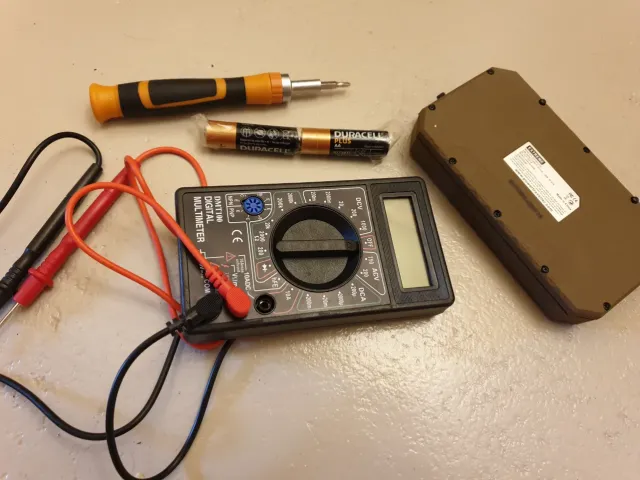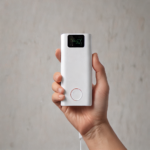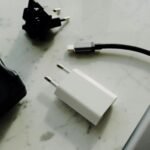To check your power bank capacity with a multimeter, first gather your tools: a dependable multimeter and suitable connectors. Know your power bank’s capacity, voltage, and amperage ratings. Set the multimeter to a DC voltage mode higher than the power bank’s rating. Connect the probes properly, with caution, and measure the output voltage. Calculate the capacity by considering voltage and current measurements, comparing these with the manufacturer’s specifications. Confirm you’re interpreting the results accurately. If you’re curious about each step in more detail, there’s plenty more to learn.
Gather Your Tools
Before you begin, make certain you’ve gathered all necessary tools, including a multimeter, power bank, and appropriate connectors. You’ll need a reliable multimeter to measure voltage and current accurately. Multimeter accuracy is vital, so confirm it’s properly calibrated. Calibration guarantees that your readings are precise, providing you with the confidence that your measurements reflect the true electrical characteristics of your power bank.
Next, consider the power bank you’re testing. Knowing its capacity and charging time is essential. The power bank capacity, usually measured in milliampere-hours (mAh), indicates how much charge it can store. This figure is important when comparing the measured capacity against the manufacturer’s specifications. Additionally, understanding the charging time helps you evaluate the efficiency and performance of the power bank.

Make certain you have the right connectors to link the multimeter to the power bank. This setup allows you to measure the current flow and voltage drop accurately. Precision in your connections ensures that you don’t introduce unnecessary resistance, which could skew your results. By carefully preparing and understanding your tools, you’ll be ready to proceed with confidence.
Understand Power Bank Specs
Understanding the specifications of your power bank is important for accurately evaluating its performance and enhancing it meets your needs. You need to know the capacity, usually measured in milliampere-hours (mAh), to comprehend how many charges it can provide to your devices. Cross-reference this against your devices’ battery capacities for precise power bank compatibility.
Next, look into the voltage and amperage ratings. A typical power bank outputs 5V, but higher-end models might offer multiple voltage options. Amperage, often labeled as output current (e.g., 2.1A), impacts the charging speed. A higher amperage means faster charging, but you must make sure your device can handle the increased current to avoid damage.
Also, consider the number of output ports and their specifications. Multiple ports can charge several devices simultaneously, but each port may have different amperage ratings. Verify these details to optimize charging efficiency.
Lastly, review any additional features like Quick Charge or USB-C Power Delivery, which can greatly enhance charging speed. These technologies adjust the voltage and amperage dynamically, enhancing faster and more efficient charging. Understanding these specs enhances you maximize your power bank’s potential while maintaining freedom in your device usage.
Set Up the Multimeter
To set up your multimeter for checking power bank capacity, you’ll need to choose the correct voltage setting and confirm the probes are connected properly. Start by setting the multimeter to DC voltage mode, typically indicated by a ‘V’ with a straight line above it. Then, attach the red probe to the VΩmA port and the black probe to the COM port.
Choose Correct Voltage Setting
Setting up the multimeter correctly involves selecting the appropriate voltage range to match your power bank’s specifications. First, identify the voltage rating of your power bank, usually labeled in volts (V). Ensuring voltage accuracy is essential for reliable measurements. Start by turning your multimeter’s dial to the nearest higher voltage setting than the rated voltage of your power bank. For instance, if your power bank is rated at 5V, set the multimeter to a range that can read up to 10V.
Using the correct voltage setting not only guarantees accuracy but also protects your device and the multimeter from potential damage. Misreading the voltage could lead to erroneous conclusions about your power bank’s capacity and health.
If you encounter anomalies or suspect inaccurate readings, consider these troubleshooting tips: check the multimeter’s battery, ensure the probes are intact and connected properly, and verify the voltage rating on the power bank itself. Sometimes, simply recalibrating the multimeter can resolve minor issues. By focusing on these details, you can achieve precise and dependable measurements, empowering you to assess your power bank’s performance accurately.
Connect Probes Properly
One critical step in measuring your power bank’s capacity is connecting the multimeter probes correctly. Proper probe attachment guarantees multimeter accuracy, which is essential for obtaining precise readings. Start by identifying the two probes: the red (positive) and the black (negative). Insert the black probe into the COM (common) terminal of the multimeter. This terminal is usually marked with a minus sign (-) or labeled ‘COM’.
Next, insert the red probe into the terminal labeled with a V (voltage) symbol. This terminal may also be marked with the Greek letter omega (Ω) or a diode symbol, depending on your multimeter model. Ensure the probes are securely connected to avoid any loose connections, which could lead to inaccurate measurements.
Once the probes are properly attached, you can proceed to attach them to your power bank. Connect the black probe to the negative terminal of the power bank and the red probe to the positive terminal. Guarantee a firm contact to maintain a stable reading. Remember, maintaining proper probe attachment is critical to achieving reliable and accurate results. With this setup, you’re now ready to accurately measure the power bank’s capacity, empowering you with precise, actionable data.
Connect the Multimeter
Verify the multimeter’s probes are properly connected to the appropriate ports, with the black probe in the COM port and the red probe in the VΩmA port. Ensuring this initial setup is correct is crucial for multimeter accuracy and effective troubleshooting. An improperly connected probe can lead to inaccurate readings and potential damage to both the multimeter and the power bank. Double-check the connections before proceeding.
Next, turn on your multimeter and set it to the appropriate measurement mode. For this task, you’ll likely be using the DC voltage setting. Carefully inspect the multimeter’s display to confirm it’s functioning correctly. If your multimeter has an auto-ranging feature, it will automatically select the appropriate range for the given measurement. Otherwise, you may need to manually set the range to match your power bank’s specifications.
Before connecting the multimeter to the power bank, make sure you’ve taken all necessary power bank safety precautions. This includes verifying that the power bank is not damaged and that it is fully charged or at least has a known charge level. Safety is paramount; any oversight can lead to inaccurate results or even hazards.
Measure the Voltage
To measure the voltage, first set your multimeter to the appropriate voltage range, ensuring it matches the power bank’s output specifications. Next, connect the multimeter probes to the power bank’s terminals and observe the reading on the display. Accurate voltage measurement is important for evaluating the power bank’s health and capacity.
Setting Multimeter Voltage Range
Before you measure the voltage of your power bank, make certain that your multimeter is set to the appropriate DC voltage range. This step is vital for obtaining accurate readings and avoiding potential damage to your multimeter.
To set your multimeter correctly, follow these steps:
- Select the DC Voltage Setting: Most multimeters have a dial or button to switch between AC and DC measurements. Confirm it’s set to DC, often denoted by a straight line above a dotted line.
- Choose the Appropriate Voltage Range: If your multimeter has manual range settings, opt for a range higher than the maximum expected voltage. For a typical power bank, a range of 20V DC is usually adequate.
- Double-Check Connections: Verify that your multimeter probes are correctly inserted into the common (COM) and voltage (V) ports. This prevents inaccurate readings and assists in troubleshooting connection issues.
Reading Output Voltage
With your multimeter correctly set to the appropriate DC voltage range, you’re ready to measure the output voltage of your power bank. Connect the multimeter’s positive (red) probe to the power bank’s positive terminal and the negative (black) probe to the negative terminal. Establish secure connections for precise readings.
Observe the multimeter’s display. The output voltage should align with the rated voltage specified by the manufacturer, typically 5V for USB power banks. A significant deviation indicates potential issues that may impact capacity estimation and charging efficiency. An output voltage notably lower than the rated value could suggest internal battery degradation or poor voltage regulation.
To deepen your analysis, focus not only on the voltage reading but also on voltage stability. Fluctuating voltage levels can impair efficient charging and suggest underlying circuit problems. Consistent voltage is essential for reliable power delivery and optimal charging performance.
Incorporate these findings into your troubleshooting process. A stable, accurate voltage reading supports a healthy power bank, while irregularities could necessitate further inspection or repair. By systematically measuring and analyzing the output voltage, you gain valuable insights into your power bank’s functionality, ensuring it meets your freedom-driven needs for dependable power on the go.
Calculate the Capacity
Start by connecting your multimeter to the power bank to measure the output voltage and current. This is pivotal for accurate capacity estimation and understanding your power bank’s battery health. To calculate the capacity, first, measure the output voltage (V) and current (I) while the power bank is discharging.
Next, multiply the voltage and current readings to get the power (P), using the formula:
\[ P = V imes I \]
Then, measure how long (in hours) the power bank can maintain this output. For precision, use a timer to track this duration. Finally, calculate the capacity (in watt-hours, Wh) by multiplying the power by the time:
\[ ext{Capacity (Wh)} = P imes ext{Time (hours)} \]
Convert watt-hours to milliamp-hours (mAh) for easier comparison with the manufacturer’s rating:
\[ ext{Capacity (mAh)} = rac{ext{Capacity (Wh)} imes 1000}{ext{Output Voltage (V)}} \]
This process helps evaluate:
- Charging efficiency: Determine how effectively your power bank converts stored energy.
- Battery health: Assess the current state of your power bank’s battery.
- Power bank lifespan: Predict how long your power bank will last based on its current performance.
Interpret the Results
Interpreting the results involves comparing your calculated capacity against the manufacturer’s specifications to gauge the power bank’s efficiency and health. Begin by noting the capacity stated on the power bank, typically listed in milliamp-hour units (mAh). If your calculated capacity is within 80-90% of this value, your power bank is performing well. Discrepancies beyond this range suggest potential issues.
For precise interpretation, consider the age and usage patterns of the power bank. A new power bank should closely match the specified capacity, while older ones naturally degrade over time. If your results are significantly lower than expected, it might indicate internal battery wear or faulty components.
Employ troubleshooting techniques to isolate problems: check for consistent output voltage and verify that your multimeter is calibrated correctly. If issues persist, inspect for physical damage or consider professional evaluation.
Frequently Asked Questions
How Can I Identify a Counterfeit Power Bank?
You’ll never believe how many counterfeit power banks are out there! To identify counterfeit ones, scrutinize the power bank capacity. Compare the labeled capacity with actual performance; discrepancies often indicate a fake. Stay vigilant and free!
What Safety Precautions Should I Take When Using a Multimeter?
When considering multimeter safety, always confirm the device is set correctly for voltage measurement. Wear insulating gloves, avoid touching metal parts, and verify connections are secure. This prevents electric shock and guarantees accurate readings.
How Often Should I Check My Power Bank’s Capacity?
You should check your power bank’s capacity every three months. This ideal frequency guarantees maintaining accuracy. Regularly calibrate your multimeter to get precise readings, securing your power bank remains reliable and efficient for your needs.
What Are Common Signs of a Failing Power Bank?
Common signs of a failing power bank include capacity degradation and charging issues. You’ll notice it depletes faster and struggles to charge devices. These symptoms signify it’s time to replace your power bank for reliable performance.
Can Environmental Factors Affect Power Bank Capacity?
Yes, environmental factors can affect power bank capacity. Temperature effects can degrade battery performance, reducing efficiency. Additionally, high humidity impacts internal components, potentially causing short circuits or corrosion. Always store your power bank under ideal conditions.



